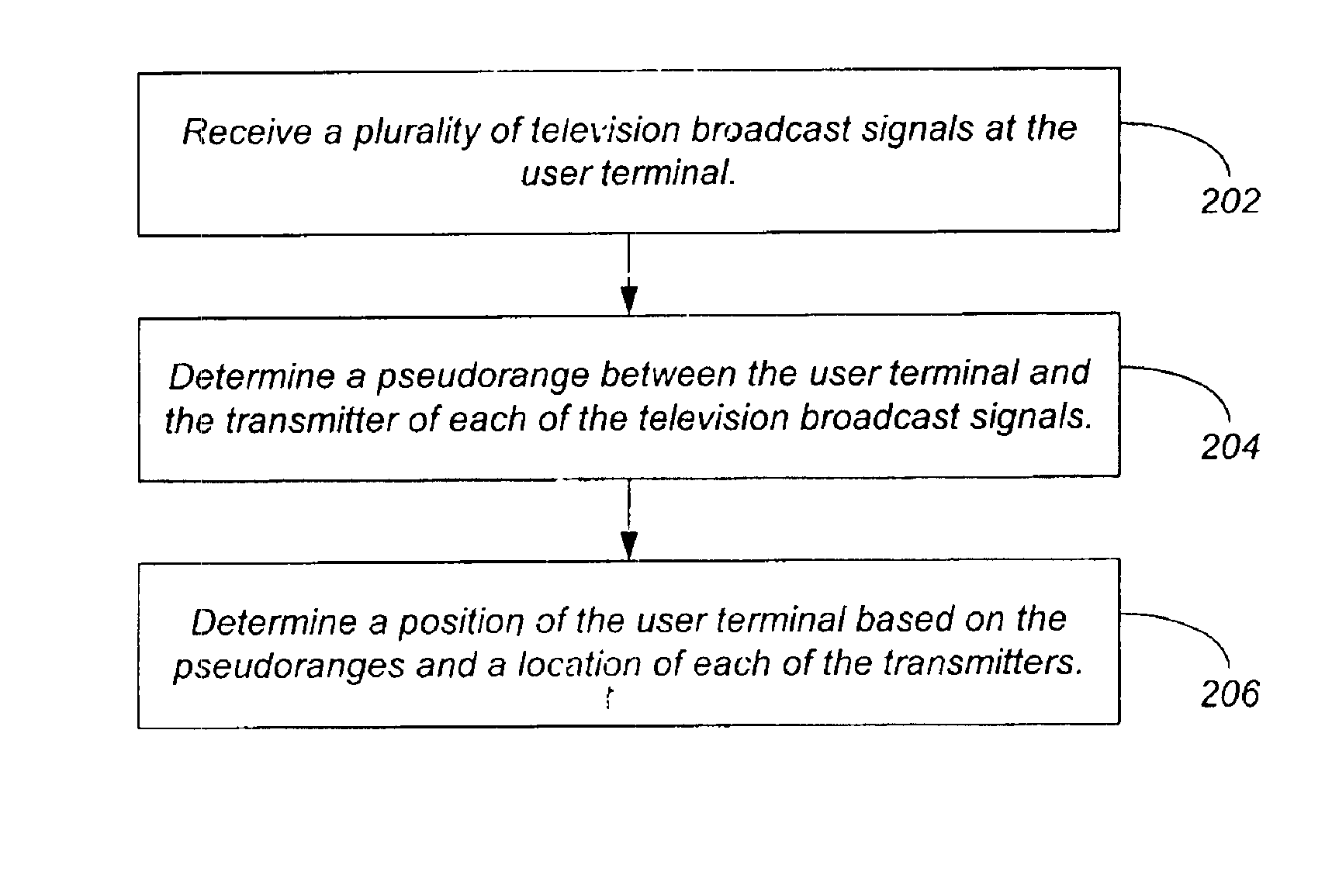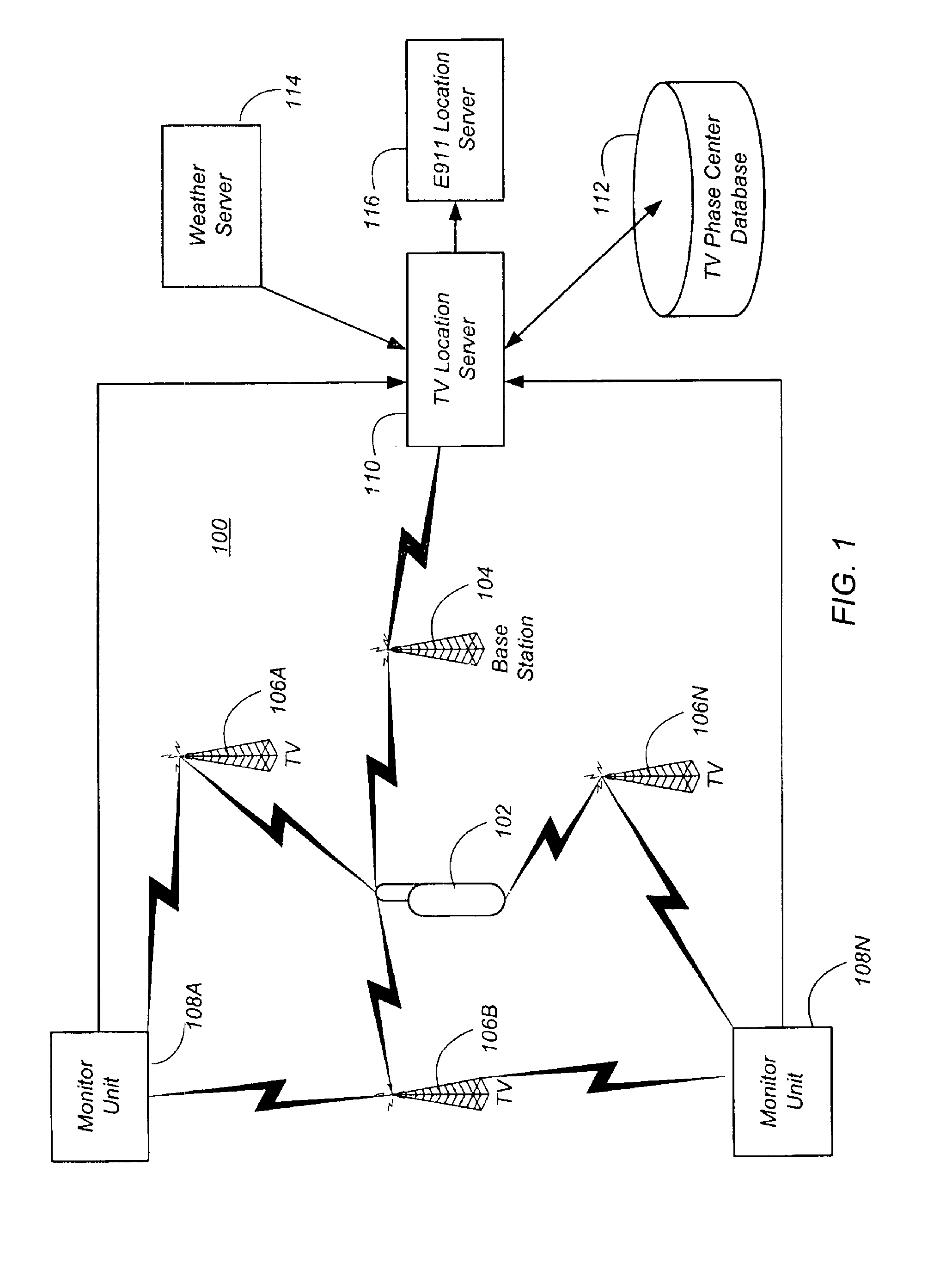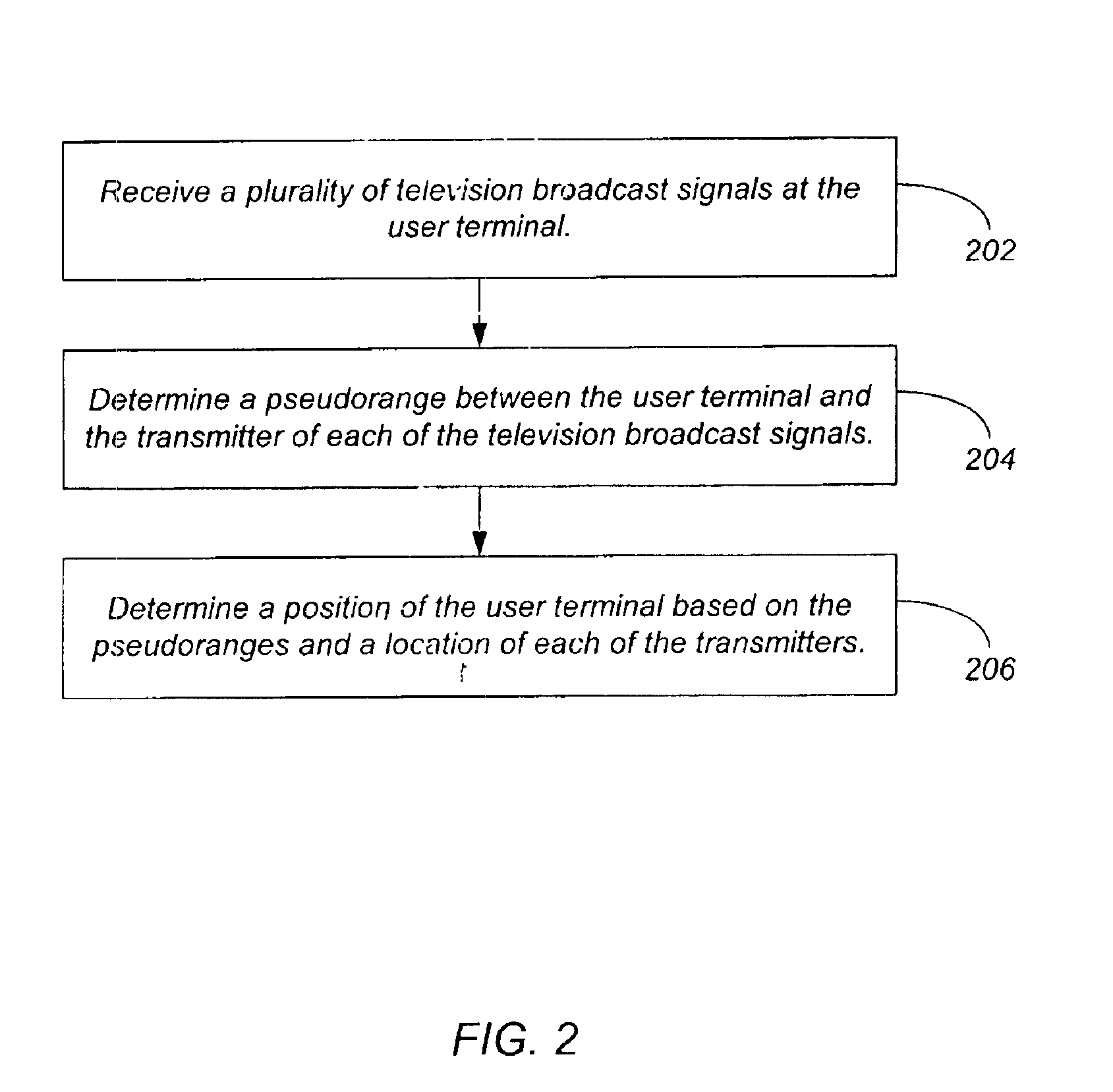Position location using ghost canceling reference television signals
a technology of television signal and location location, applied in direction finders using radio waves, navigation instruments, instruments, etc., can solve the problem that conventional television signal receivers are unable to acquire timing information, and achieve the effect of reducing cost and low received signal-to-noise ratio (snr)
- Summary
- Abstract
- Description
- Claims
- Application Information
AI Technical Summary
Benefits of technology
Problems solved by technology
Method used
Image
Examples
Embodiment Construction
As used herein, the term “server” generally refers to an electronic device or mechanism, and the term “message” generally refers to an electronic signal representing a digital message. As used herein, the term “mechanism” refers to hardware, software, or any combination thereof. These terms are used to simplify the description that follows. The servers and mechanisms described herein can be implemented on any standard general-purpose computer, or can be implemented as specialized devices.
Implementations of the invention are described below with reference to the NTSC (National Television System Committee) standard, which has been adopted in the United States, Canada, Mexico and elsewhere. Recently, a new modification to the United States NTSC analog TV system has been proposed, adopted by the ATSC, and is now being incorporated in analog TV transmissions. This modification is called the Ghost Canceling Reference (GCR) signal for NTSC, and is present in most NTSC analog broadcast tele...
PUM
 Login to View More
Login to View More Abstract
Description
Claims
Application Information
 Login to View More
Login to View More - R&D
- Intellectual Property
- Life Sciences
- Materials
- Tech Scout
- Unparalleled Data Quality
- Higher Quality Content
- 60% Fewer Hallucinations
Browse by: Latest US Patents, China's latest patents, Technical Efficacy Thesaurus, Application Domain, Technology Topic, Popular Technical Reports.
© 2025 PatSnap. All rights reserved.Legal|Privacy policy|Modern Slavery Act Transparency Statement|Sitemap|About US| Contact US: help@patsnap.com



